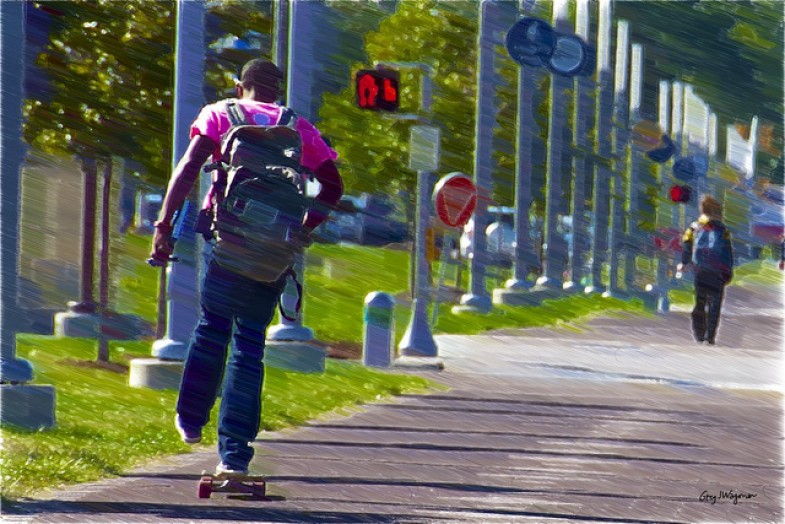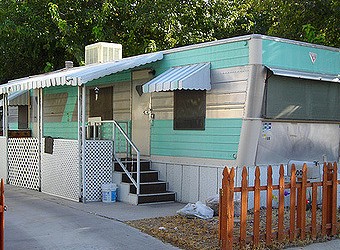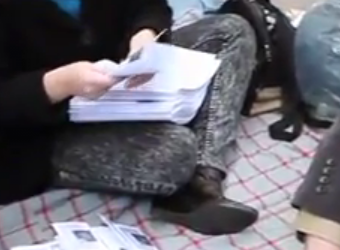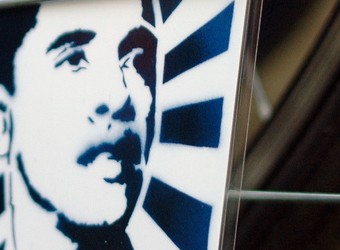Indianapolis is not yet a city people add to their bucket lists or dream about moving. It’s generally seen as a good town to raise a family or find a job—a sensible, comfortable, but not exactly exciting or exceptional place. But after a weeklong visit--where I sampled everything from world-class arts institutions to working-class taverns, I came away distinctly surprised and impressed.
As an urban consultant and travel writer who logs many miles each year walking the streets of American cities, I believe Indy can hold its own against other thriving urban centers. And I’m not alone. Last year Metropolis design and architecture magazine ranked Indianapolis one of “The World’s Most Livable Cities”, and Huffington Post declared it one of seven “Most Underrated Cities for Millennials”.
Many years had passed since my last visit, and I noticed a new sense of self-confidence surging through town. Far from being “Naptown” or “Indy-no-place”, as it was known in the 1980s, the city exudes an urbane energy attracting many young people. And Indianapolis’ lingering reputation as socially “behind the times” was to put to rest last year thanks to a spirited citywide campaign that changed a state law many thought sanctioned discrimination against gays and lesbians. During my visit the city was festooned with signs proclaiming “Indy Welcomes All”.
The town seems poised to join the ranks of medium-sized American cities winning admiration as centers for innovation, culture and livability. And if that strikes you as overly optimistic, remember that in years past, Denver, Seattle, Minneapolis-St. Paul, Austin and even Portland were on few people’s lists of the best American cities.
So what happened? My research found that Indianapolis showcases civic involvement and collaboration. Going back to the 1980s, leaders from many sectors came together to reinvigorate the downtown and put Indy on the map as America’s undisputed amateur sports capital. Next, there was wide public support, led by the Central Indiana Community Foundation, for building the Indianapolis Cultural Trail—a world-class bike and pedestrian network that has revitalized inner city neighborhoods near downtown. Income inequality and struggling public schools are now top on the list for many citizen’s groups.
Bragging Rights
While Midwestern modesty inhibits locals from bragging out loud, there are good reasons for them to be proud and upbeat about Indianapolis’ future:
•World Class for Biking and Walking
Although synonymous with auto racing, Indianapolis is now gaining attention as a great place to bike and walk—a prerequisite for any city wanting to offer a high quality of life these days.
A major attraction is the Indianapolis Cultural Trail, an 8-mile bicycle and pedestrian path winding through downtown that is being heralded as a breakthrough in transportation. Planners and livability advocates from more than 200 cities around the world have come to study the trail for ways to makrwalking and biking more safe, comfortable and fun in their own communities. “The trail is putting Indianapolis on the map as a place to see bold innovation,” reported the New York Times when it opened in 2014.
The Cultural Trail effortlessly connects with other biking and walking trails, allowing riders and hikers to cover much of the city unmolested by auto traffic. Bikes can be rented with the swipe of a credit card at many bikeshare stations downtown, sponsored by the Pacers NBA basketball team. The Cultural Trail links with scores of miles of walking and bike paths through neighborhoods and along local creeks and canals.
And it’s not all about bikes. For most of its length, the Cultural Trail separates bikers from walkers, offering a safer, more pleasant experience for people on foot. Walkscore, which quantifies the walkability of all locations in the US, declares downtown a “Walker’s Paradise.”
•Dynamic Downtown
Downtown Indy pulses with people headed to shopping, restaurants, shows, ballgames, museums, cafes, festivals, the landmark city market and appealing historic districts around it. That’s why Livability.com ranked it the #3 downtown among all mid-sized and small metropolitan regions in the US.
More than 40,000 students are enrolled at universities in the heart of Indianapolis, which help explains the abundance of coffee shops, funky boutiques, patio dining, microbreweries, exuberant streetlife and the independent spirit all around.
•Burgeoning Arts Scene
Indy is known nationally for sports, but after hanging out there for a week it’s obvious that the arts deserve equal billing. The offerings encompass everything from the Indianapolis Museum of Art and Indiana Repertory Theatre to storefront art galleries and cabarets presenting experimental performance works.
Scott Stulen, who recently moved from Minneapolis to become Curator of Audience Experiences and Performance at the Indianapolis Museum of Art, admitted Indianapolis was not on his radar until he came to do a TED talk a couple of years back. “I was really surprised by all the creative energy here--- each night there are multiple cool things happening. The young creative class stays here instead of fleeing someplace else. And it’s livable and bikeable. People are moving back into the city from the suburbs.”
Building on Indy’s Strengths
Like all, cities, Indianapolis faces challenges. Some are universal issues, such as improving education and expanding economic prospects for everyone in the community. Others are misperceptions, which run the gamut from being “too small town” to being “too inner city”. But, happily, the community possesses significant social, cultural, economic and creative capital to overcome problems and take advantage of opportunities. Here are some of Indy’s top assets helping the city chart a bright future:
•Collaborative Spirit
The national organization CEOs for Cities honors Indianapolis “as a model of collaboration, inspiration and action.” The talent of local citizens for putting their heads together has paid off many times through the years: attracting major league teams and sports events to town, recruiting most of America’s leading amateur sports organizations to move here and groundbreaking projects like the Cultural Trail.
“There’s something magic in the DNA of the place,” says Central Indiana Community Foundation President and CEO Brian Payne, who moved here from San Diego and masterminded creation of the Cultural Trail---with lots of help. “People want to know how to help you get things done.”
Indy’s cooperative spirit isn’t confined to big ticket projects. It also applies to grassroots efforts where people roll up their sleeves to make a difference in their community.
One of the major challenges facing the city, according to many people I interviewed, is the performance of some local schools. This is an important issue since about one-third of the city’s kids live in poverty (average for large US cities), and education offers their best hope for upward mobility.
When Joanna Taft moved to Indianapolis from her hometown of DC with her Indiana-bred husband, they found a house they could afford in a diverse neighborhood they loved, Herron Morton Place. But after living many years in the community, the local public high school didn’t seem right for their daughters. So instead of moving to the suburbs, they joined with a group of neighbors to found Herron High School--- a public charter school now ranked in the top one percent of public high schools nationally for academic achievement, according to US News & World Report. Forty percent of students come from low-income families, and the graduation rate is 98 percent.
“I don’t think we could have done this back in DC,” says Taft, who also founded the Harrison Center of the Arts. “Indy is incredibly accepting of outsiders, and the leadership is very accessible to people.”
•A Creative Culture
A number of people confided to me that decades of indifference to Indianapolis by the national media, (except Memorial Day weekend at the Speedway) leaves locals feeling a bit insecure about their hometown. But I noticed this was less true for younger people.
“Some folks, especially decisionmakers, ask me, ‘Why are you here?’” notes Michael Bricker, 33, a production designer on many independent film hits, who lives in Indy when not involved in shooting a movie. “We have to stop telling ourselves we’re not good enough.”
“I lived in Austin, and it was great, and I like Los Angeles and New York,” he says. “But I come back to Indianapolis because I like being in a city that’s not finished---I think a lot of Millennials are drawn to that notion.”
Bricker sees tremendous creativity among young people starting up projects around town. He helped start this surge with People for Urban Progress (PUP), a non-profit workshop where he and a handful of colleagues design and sell sturdy tote bags, bike bags and duffel bags made out of materials salvaged from the roof of the now-gone RCA Dome NFL stadium. Bricker launched the project to keep 13 acres of synthetics out of the landfill but much to his surprise it’s turning into a thriving operation. PUP also repurposes seats out of the old Indianapolis Indians baseball park to provide seating at bus stops and other public places.
One of Indianapolis’ community stars is Big Car Collaborative, an arts organization dedicated to strengthening the links between creative work and community revitalization. Focusing on placemaking through pop-up creations, public art in public places and community building projects, the group participates in projects to help revitalize low-income neighborhoods as well as presenting gallery shows.
“The practice of engagement is central to us. It’s not all about what you make, but what you make happen,” says founder Jim Walker, who moved to Indy after growing up in Kokomo, Indiana. “Spending time talking to people in the neighborhood is just as important as time in the studio.”
•Real-Life Diversity
Living in Indianapolis offers the real experience of American life in the 21st Century. The city is about 38 percent people of color---almost exactly the percentage as the US as a whole. This includes longstanding African-American and Latino communities as well as recent immigrants from China, Myanmar, Nigeria, Latin America and India.
Mali Jeffers, a social enterepreneur and project manager whose initiatives earn her the tag “the Unsegregator” from the Indianapolis Star, enthuses about Indianapolis as a great place to raise a family. “There are so many cultural assets in the city, like the zoo and museums. There was also the matter of authenticity. If I take my daughters shopping downtown, they see a richness of people and places, the architecture, the farmer’s market, events like a marathon, a car driving by playing cool music. The things you can learn just walking down the streets.”






